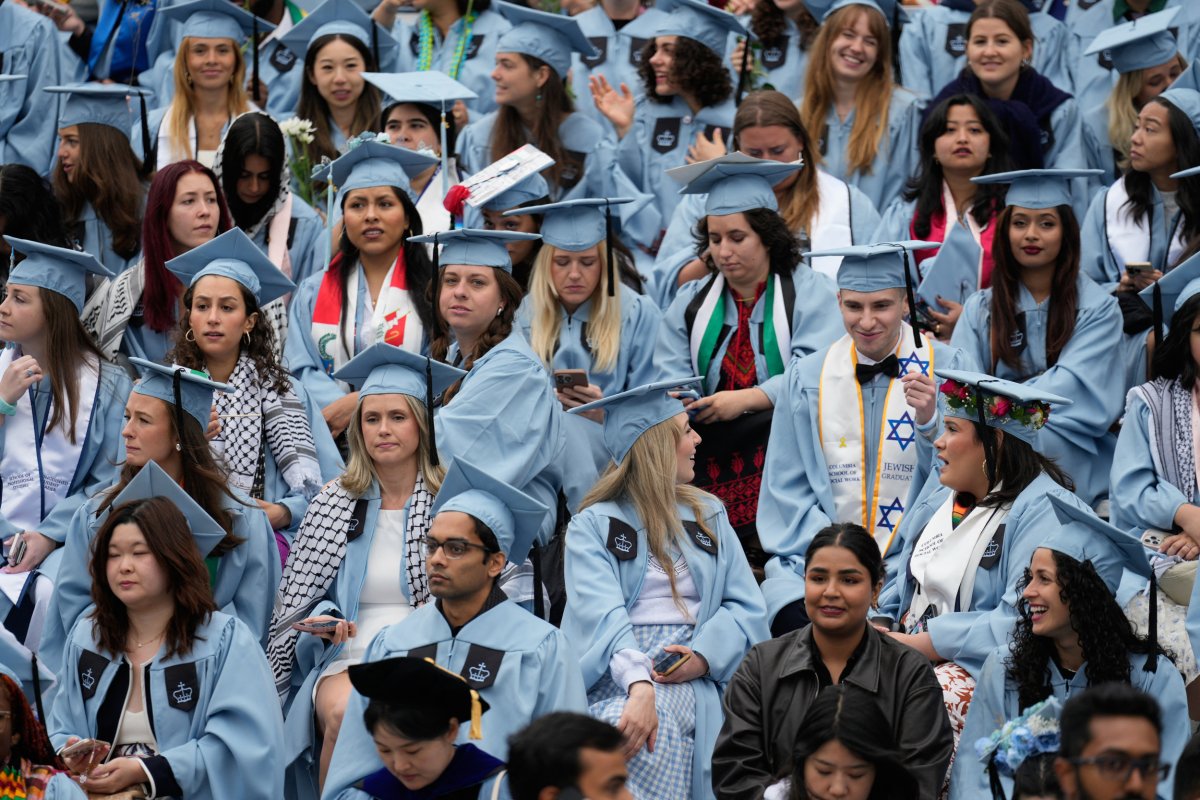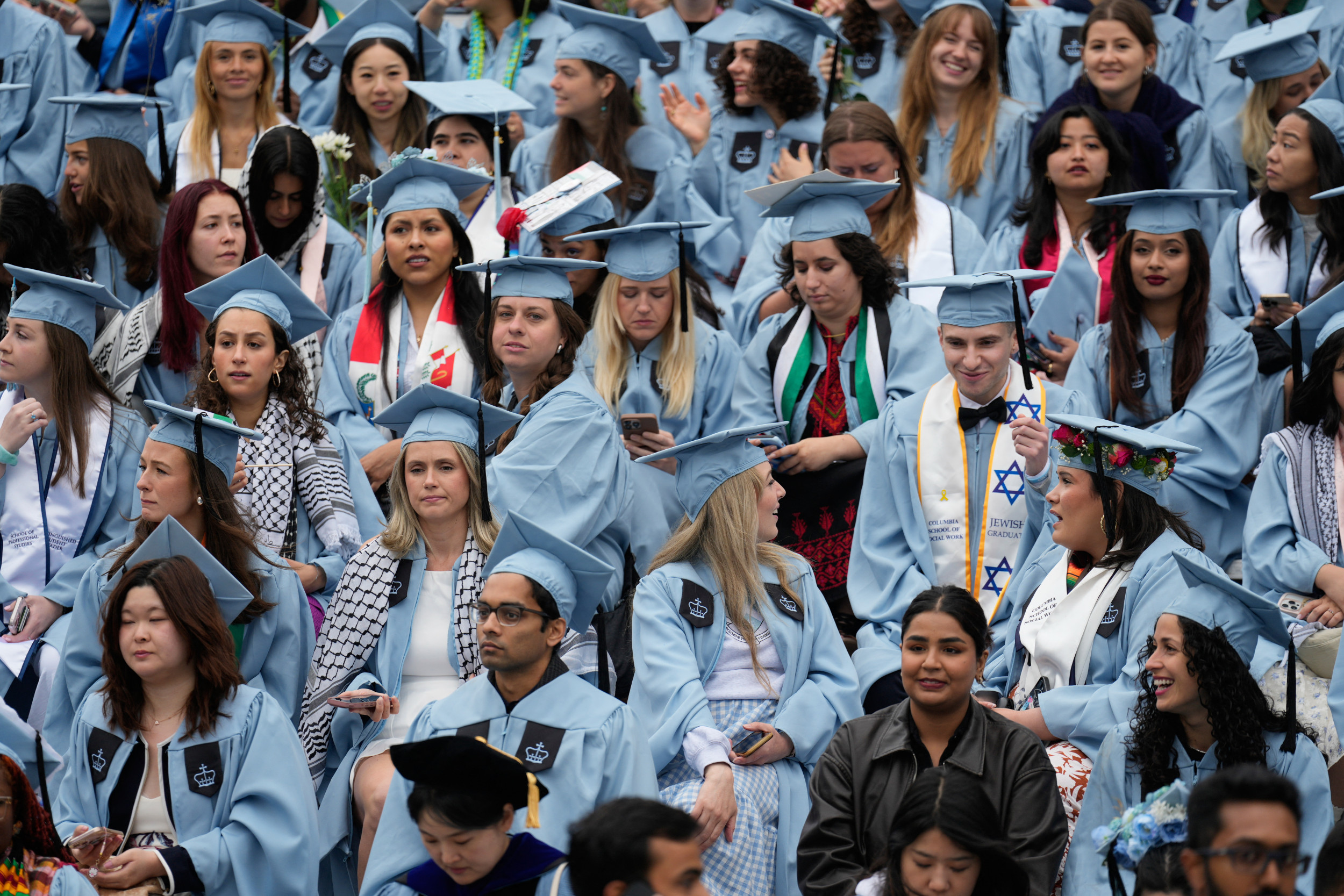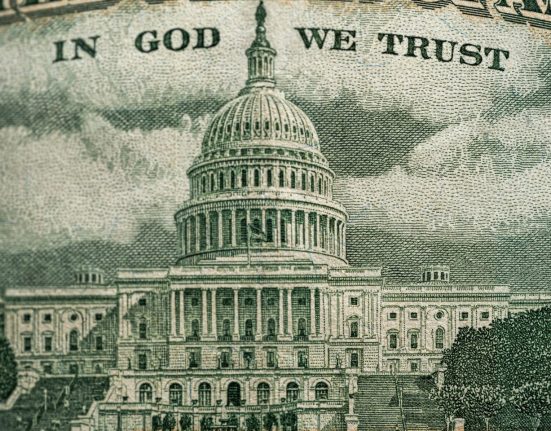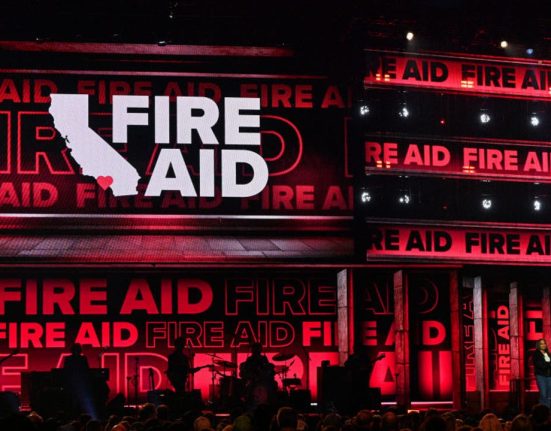Roughly 50 percent of families no longer see college as a good investment, according to a soon-to-be released book on higher education.
In author Jeff Selingo’s “DREAM SCHOOL: Finding the College That’s Right for You,” on sale September 9, only 56 percent of families said they saw college as a worthwhile investment, down from 85 percent in 2015.
Why It Matters
Colleges have been facing an enrollment crisis in recent years, showing many Americans have lost faith in higher education as the costs of attendance skyrocket.
From 2019 to 2021, male undergraduate enrollment dropped by 10.2 percent, according to the National Student Clearinghouse, while female enrollment declined by 7.8 percent.
While community colleges have gained some popularity among students and their parents, the drop in confidence in higher education could trigger significant shifts in who attends college and what skills people bring into the future workforce.

SETH WENIG/POOL/AFP via Getty Images
What To Know
While 85 percent of families said they saw college as an good investment in 2015, only 56 percent said they felt the same now, according to DREAM SCHOOL, meaning 44 percent no longer see college as a fruitful investment.
Nationally, the cost of tuition and fees averaged $14,688 in 2023, according to Statista. This prices out higher education for many low-income and middle class families unless they take on large student loans with high interest rates.
“When more graduates are living at home post-graduation and struggling to meet their student loan payments, you can see why some are calling into question the cost of college equating with more professional dividends down the line,” Alex Beene, financial literacy instructor for the University of Tennessee at Martin, told Newsweek.
“The lesson isn’t necessarily to forgo college, but rather be smarter in your approach to picking a major that leads to easier employment availability post-graduation with better wages.”
Still, among those planning to attend college, the scope of applications is far wider than in previous generations. In DREAM SCHOOL, Selingo reported that Gen Z submits three times as many applications as Gen X—13 million last year versus 4.4 million in 2001—despite the graduating class only increasing by 800,000.
Applications to Ivy League schools and other selective colleges have also tripled in 20 years to roughly 2 million, while the number of total freshman seats available remains steady at 100,000.
What People Are Saying
Kevin Thompson, CEO of 9i Capital Group and host of the 9innings podcast, told Newsweek: “Fewer people view college as a good investment today for several reasons. The biggest one? Costs continue to outpace inflation, while the return on investment—especially when weighed against student debt—often doesn’t justify the price tag. The quality of many degrees just isn’t enough to make up for the long-term financial burden.”
Beene also told Newsweek: “Despite multiple studies in recent years that have backed up the time-tested idea that college is a good investment, its reputation with some Americans has tumbled. As the cost of attendance has risen, many students are leaving with more debt and, in some situations, underemployed in their first job.”
What Happens Next
As the price of higher education continues surging, college is increasingly becoming something reserved for the wealthy, according to Thompson.
“A lot of families aren’t willing to endure years of financial strain just to pay off massive student loans. Instead, people are choosing internships, apprenticeships, or trade schools to get into the workforce faster and with less debt,” Thompson said.
“The implications could be wide-reaching, however, if we believe in the classic Adam Smith supply-and-demand model, then a drop in demand should eventually force four-year colleges to adjust pricing. Whether that happens or not… we’ll see.”







